Buying Guide Aston Martin V8 Vantage - 2005-2017
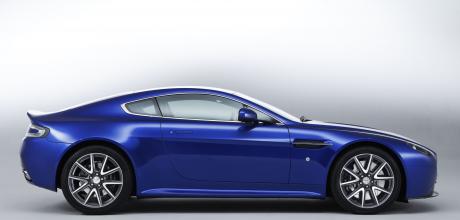
Can you afford to buy, run and repair a 4.3- or 4.7-litre V8-powered Vantage that was manufactured between 2005 and 2017? Find out the answers with our comprehensive buying guide.
WORDS ROB HAWKINS
V8 VANTAGE BUYING GUIDE
An extensive guide on what to look for when buying the first generation of V8 Vantage
The V8 Vantage produced between 2005 and 2017 can look far too tempting on paper: a sub-five seconds 0–60mph time with a top speed of between 174mph and 190mph, a dry-sump’d quad-cam 4,280cc or 4,735cc all-aluminium V8 engine mated to a six-speed manual gearbox or a six- or eight-speed semiautomatic Sportshift, bonded aluminium bodywork and resale values that start from around £25k.
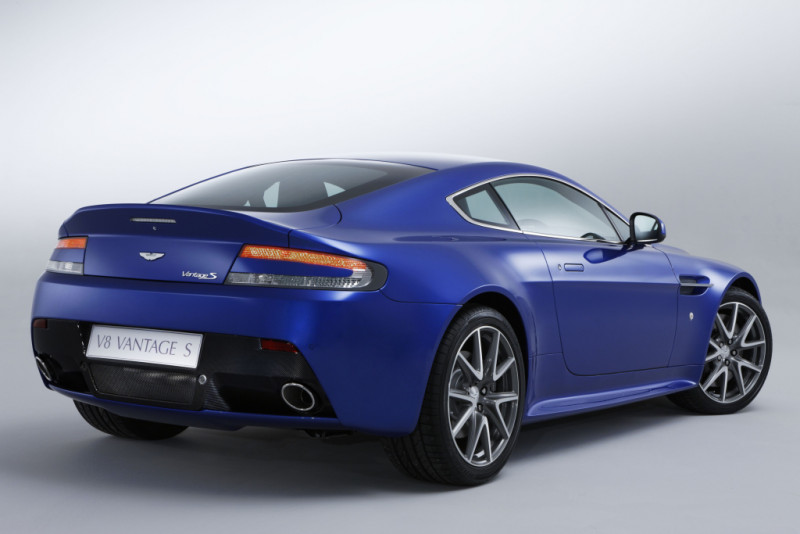
So, what’s the catch? Find a good example that has been looked after and continue to be meticulous with maintenance, and whilst we cannot guarantee you’ll have trouble-free motoring for life, you certainly stand a better chance of appreciating the exhilarating performance and handling this supercar boasted when it was new and why it worried the likes of the Porsche 911.
Based on Aston Martin’s VH Platform, rumblings of the V8 Vantage appeared as a concept car in 2003 at the North American International Auto Show. Two years later, it was officially launched at Geneva as a coupe with prices starting at £79,995.
By 2007, the convertible was added to the model line-up, which were all powered by a 4,280cc V8 engine that had been derived from Jaguar’s AJV8 motor but was equipped with numerous components exclusive to Aston Martin (the engine was code-named AJ37). The displacement was increased to 4,735cc in May 2008 and so all models are now classed as having either a 4.3 or 4.7 V8 engine.

The early V8 Vantage was criticised by the press as needing to be revved hard to get the most out of its performance (peak power of 385bhp was found at 7,000rpm and peak torque of over 300lb ft required 5,000rpm from the engine), so Aston Martin was seemingly always tweaking those figures to shake that poor reputation. They well and truly fixed the problem in 2011 when the Vantage S was launched, which boasted 436bhp at the flywheel of its 4.7-litre V8 and produced 347lb ft of torque, not to mention a top speed of 189mph.
In 2009, the V8 Vantage was accompanied by the V12 model (we’re only looking at the V8 in this buying guide, but will evaluate the V12 in a separate buying guide soon). The V8 continued for another eight years, before it was replaced by the next generation of the Vantage and powered by a twin-turbocharged 4.0-litre V8 from Mercedes-Benz.
Sales throughout the 2005-2017 V8 Vantage’s production life peaked in 2006 and 2007 at over 2,300 per year and totalled over 12,000 during its entire time.
VALUES & COLLECTABLES
The V8 Vantage has yet to acquire classic car status, so whilst used car values have dropped, they may continue to drop further – many of those early 2005-2007 models that were sold for at least £80k are now for sale at around a third of this value. Later models can demand an extra £20k, which for a supercar that’s around eight years old, is comparative to a similar age of Porsche 911.
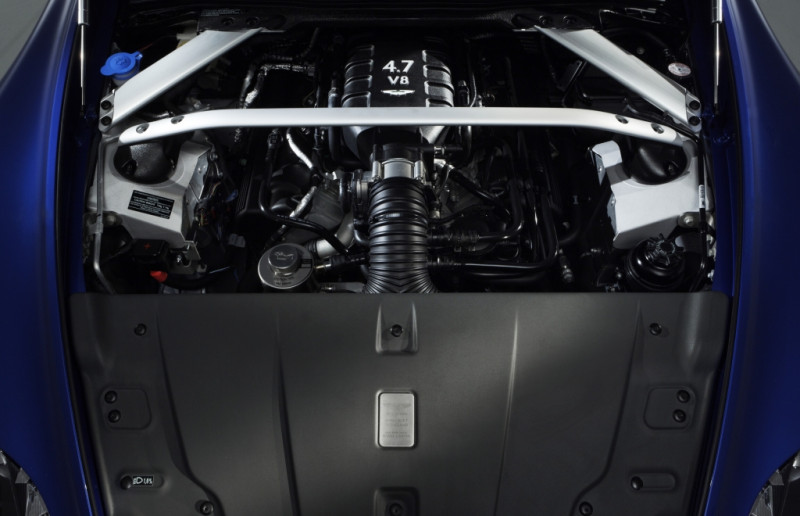
“Values took a hit early in the life of the Vantage due to the great financial crisis of 2008 but since then, the depreciation curve for a Vantage has been remarkably gentle,” says Guy Jenner of HWM. “There is always demand for nice examples. They have a great chassis, naturally aspirated V8, hydraulic power steering that is full of feel and rear-wheel drive with an LSD. They are a set of ingredients that are not easy to find in the car market. Vantage has that sweet spot of driver engagement, usability and timeless beauty.”
Prices don’t appear to diff er too greatly between the coupe and convertible (roadster), whereas the Vantage S and anything with limited-edition status seem to warrant more money, as do the models with a manual gearbox instead of the semi-automatic Sportshift.
Guy Wyles at Chiltern Aston recommends looking for a 2012-2016 model year Vantage if your budget allows, especially if you want a Sportshift transmission. “The later eight-speed Sportshift 2 gearbox designed by Prodrive is a vast improvement over its predecessor,” he says. “These later model year cars also enjoy many of the Vantage S improvements over the standard pre- 2012.25 model year Vantages, including bigger brakes, wider tyres, quicker steering and hill-start assist.” There are numerous limited-edition models to note, such as the Nürburgring celebration line-up, which started with the N400 in 2007, boasting 400bhp from its 4.3-litre V8 and a Sports Pack that later became available on standard models (lightweight wheels, uprated springs and shocks, and a revised rear anti-roll bar). The exterior of the N400 was available in Bergwerk Black, Lightning Silver, or Karussell Orange. Inside, there’s perforated leather and a map of the Nürburgring stitched into the centre armrest along with a numbered plaque. Only 480 coupes and convertibles were produced to celebrate the 480 seconds it took the N400 to complete a lap of the Nordschleife circuit. Later N-models include the N420 and in 2014, the N430, which carried a £89,995 price tag and was equipped with most of the mechanical components from the Vantage S, including electronically controlled suspension dampers.
Other models to look for include the V8 Vantage GT and GTS, the latter of which was marketed solely in the US in 2017 with a limited production run of 100, and a lightweight and more powerful 440bhp GT8 coupe (150 examples) in that same year. Prodrive were involved in tuning the V8 Vantage and offering a number of upgrades, so look out for models such as the N24, GT2, GT4 and Rally GT, although many may not be road legal. They also offered four upgrade packages for road-going vehicles, covering the engine, suspension, wheels and styling.
Whilst limited-edition models may prove tempting as an investment, it’s essential to ensure there’s sufficient evidence to prove a car’s provenance. So, if you are looking at buying an N400, for example, don’t solely count on the map of the Nürburgring being stitched into the centre armrest as proof. Ask to look at any paperwork and verify the registration plate and VIN (vehicle identification number) with an Aston Martin dealer.
PRACTICALITY
At 4,385mm long, the V8 Vantage is no longer than a BMW 1 Series, but much wider — at over two metres (2,022mm), it’s larger from side to side than SUVs such as the Volvo XC90 and just as wide as a Lamborghini Urus. Compared to the Porsche 911 that the V8 Vantage was aimed at competing against, it’s wider by almost 20cm, but shorter in length by the same amount. And when compared to a DB9, it’s roughly 30cm shorter in length, but similar in width.
The V8 Vantage’s dimensions do make it look short from end to end but unmistakably wide. What you get on the inside is strictly two seats and a 300-litre boot. It’s a roomy interior for two, but there are blind spots everywhere, so reversing cameras, parking sensors and door mirrors are essential. On some models, the door mirrors automatically adjust to provide a view of the ground when reversing.
Guy Wyles at Chiltern Aston explains there’s a satisfying knack to driving a V8 Vantage with a Sportshift gearbox, but some potential problems can arise. With Drive selected so that gears are automatically engaged, it can feel lumpy, and reversing on a cold engine will be quicker than most drivers expect (the engine idles faster when cold).
This lack of control, especially when reversing uphill, can result in the clutch slipping, which eventually leads to it burning out. Guy Jenner at HWM sheds more light on this subject, explaining, “Reverse is geared to the equivalent of second gear, which is what makes reversing uphill a challenge. It is something you adapt to.” He also sums up many of the incorrect opinions and attitudes towards the Sportshift gearbox, explaining, “It is not an automatic, it is an automated manual. It really needs to be driven on the paddles all of the time and requires interaction with the throttle to smooth out shifts.
If you enjoy this type of engagement, there is great satisfaction to be had from using it. It is a little slow compared to a dual clutch system but still faster than you could change manually. If you are looking for a torque converter auto, it won’t be right for you.”
BODY & CHASSIS
The V8 Vantage has an aluminium body tub, which is bonded together and can be expensive and complex to repair, especially if it has been involved in an accident. A rear wing, for instance, costs around £7,000, a front bumper is at least £1,200 (and around £2,000 for a rear bumper), a complete door costs over £4,000 and a similar amount for a bonnet. Inspect the paintwork for signs of corrosion, which start with bubbling where the aluminium has oxidised. This can be treated by sanding down the affected area to bare metal, applying a rust inhibitor to seal the aluminium and respraying it to blend in the repair. However, a repair to a rear wheelarch, for instance, can easily result in having to blow in the entire rear quarter, so costs can soon escalate.
“With the broad shoulders of the Vantage, the rear arches are particularly prone to stone-chipping,” comments Guy Jenner at HWM.
Check around the door handles and edges of the doors for signs of paintwork damage where moisture gets underneath and corrodes, resulting in the paint lifting – according to Chiltern Aston, it often starts with a blemish that looks like a small spider under the paint. CA also finds the paintwork on the door mirror struts lifts and flakes off due to corrosion. They have found the factory-finish paint lasts for around 10 years, but these can be refurbished by Chiltern who charges £785 to strip a pair of door mirrors, repaint the assembly, rebuild and refit them. Alternatively, a new pair of struts can be bought and fitted by them for £960.
Look underneath the vehicle along the sill area for what looks like a chassis rail. This area can easily get crushed if someone incorrectly lifts the vehicle using a trolley jack positioned underneath it. If damage is visible, then it won’t affect the structural rigidity of the vehicle, but it’s an expensive and time-consuming job to fix the problem.
There’s a steel subframe at the rear of the V8 Vantage, so inspect it for corrosion. At the front, there’s an aluminium subframe (cradle).
The doors swing up slightly upon opening, so check the struts that lift them to ensure they can support the door. Fortunately, a new strut only costs around £25. Similarly, check the bonnet and tailgate remain open and supported on struts. These cost around £30 each.
Inspect the front grille, which can work loose (rattle) and also turn milky. A replacement assembly costs around £200, although there are some upgrade options, such as a lightweight AMR mesh style that was fitted to the GT8 for a little over £500.
Water ingress can be a problem on the V8 Vantage. Open the tailgate to look and feel around the boot area for damp. There are drain holes to let water out, but these can become blocked, resulting in the water leaking into the boot. Similarly, feel around the carpets in the cabin for damp.
“Vantage has that sweet spot of driver engagement, usability, and timeless beauty”
ENGINE
With two sizes of V8 petrol engine (4.3 and 4.7), the later 4.7 has cylinder liners pressed into the aluminium engine block, whereas the 4.3’s are part of the block (they are bored). Both engines use a timing chain and Chiltern Aston has found that oil leaks can emerge from around the timing chest area. Blocked breathers can also result in oil leaks, especially if the crankcase ventilation valve becomes clogged up. A replacement costs around £150. Leaks around the camshaft covers can often be fixed with a new gasket for £24.
Check the upper engine cover is secure as it can work loose and melt on the exhaust manifolds.
Popular upgrades include ECU remaps and performance air filters and exhaust systems (including sports cats). Aston Martin specialist, Bamford Rose, offers a twin throttle body upgrade (a single throttle body is fitted as standard) that promises roughly an extra 20bhp for £3,600.
Look for coolant leaks and residue from the coolant hoses and around the radiator. The coolant expansion tank is made of plastic and has some narrow plastic outlets, which could potentially fracture and leak, so look around this area for signs of coolant residue. A new tank costs £250 (and it’s wise to replace the pressure cap for £90), whereas a new radiator is around £1,000.
TRANSAXLE
The six-speed manual gearbox was supplied by Graziano Trasmissioni of Italy for the V8 Vantage and was the only gearbox fitted until 2007 when Aston Martin introduced their Sportshift six-speed automated manual. It was developed by Prodrive and incorporates a clutch, but no clutch pedal. Gearchanges can be conducted automatically, or via steering wheel-mounted paddles. In 2012, the Sportshift II was introduced, which was a eight-speed.
Both manual and Sportshift gearboxes were fitted throughout the production life of the V8 Vantage and they are all a transaxle design, which means they are mounted in the rear of the vehicle, where traditionally, only the differential would be fitted on a rear-wheel-drive vehicle. This helps to even out the weight of the vehicle between the front and rear to almost 50:50, which for an aluminium-bodied supercar that tips the scales at between 1,570kg and 1,705kg, helps to optimise handling.
During a test drive, check that the operation of gearchanges is smooth and in the case of the manual ‘box, there’s a sufficient biting point on the clutch pedal. Listen for any transmission noises that may change when pressing or releasing that clutch pedal (sometimes caused by a worn clutch release bearing) and whether the engine seems to over-rev under hard acceleration, which is a sign of a worn clutch. Any concerns with the clutch, whether it’s a manual or Sportshift need to be carefully considered because whilst a clutch slave assembly costs £400-£800, a friction plate and clutch cover cost over £1,000 and a complete clutch assembly including flywheel costs around £3,000, and that’s excluding fitting, which is at least 10 hours.
SUSPENSION
The front and rear suspension consists of aluminium upper and lower wishbones with coilovers and anti-roll bars. Sports Pack upgrades included firmer springs, dampers and mounting bushes as well as lighter alloy road wheels. Electronically controlled dampers were fitted to some models. At the front and rear, there’s an aluminium upright that houses the wheel bearing and which the wishbones are attached to (called the knuckle).
During a test drive, listen for knocks and rattles, which could indicate a worn suspension mounting bush or a worn droplink for a front or rear anti-roll bar. Droplinks are roughly £30 each, whereas larger components can be expensive, such as a damper at around £900 and a spring at £600 (complete assemblies can be a little cheaper, but are still over £1,000). If any of those suspension wishbones need to be replaced, each one costs around £500. And if the front wheel bearing is droning during a test drive, a new assembly costs almost £400. Chiltern Aston says that the lower wishbone bushes last for around 10 years, after which they start to perish and adversely affect the handling of the vehicle, although it’s rarely identified at an MOT test. They charge £3,840 to change all the lower wishbones.
STEERING
Power-assisted rack-and-pinion steering is fitted to all models of the V8 Vantage. A quick rack was fitted to the Vantage S, which was fitted as standard to all models from 2012 onwards. Steering issues appear to be rare, although routine wheel alignment will help to preserve the tyres and is recommended if the wheels are kerbed.
Still on the subject of kerb damage, Aston Martin Bits warns that a damaged track control arm (it’s fitted between the steering rack and track-rod end) is not available new from Aston Martin (only a complete steering rack), but they sell them for £300 each.
BRAKES
Brembo brakes with vented discs (335mm front and 330mm rear) were fitted as standard, with a separate mechanical caliper for the handbrake fitted to the rear discs. Brake assist was incorporated from around 2012. Check the handbrake works, especially for Sportshift models where Park is often used instead. If a handbrake caliper is seized, it may be more economical to replace it – budget for around £300 for each one.
A visual inspection of the brake discs will help to see whether they are worn and corroded. Expect to pay around £850 for a set of front discs and pads (excluding fitting), but potentially more if you need to replace the wear sensors, shims and brake pad retaining pins.
INTERIOR
The standard of the interior is very high, with leather upholstery, electrically adjusted seats, climate control, a CD stereo, and airbags to the front and side. Some components are from the Volvo parts bin, which can help with sourcing replacements. The electric window switches and even the key fob are from Volvo, along with most audio and navigation systems.
On early models, the sat-nav will probably be out of date and it may be cheaper to simply rely on your mobile phone instead. Similarly, there may be no Bluetooth connectivity.
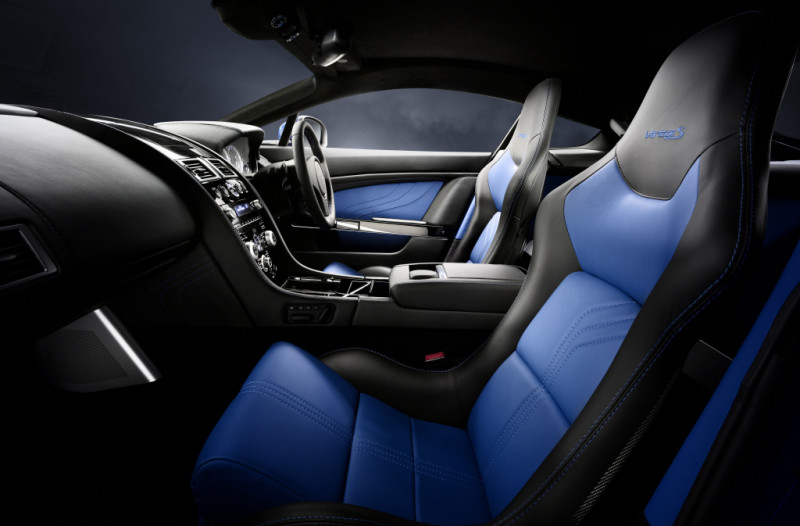
“The last of the 4.7 Vantages built enjoyed wireless music streaming and Apple CarPlay,” says Guy Jenner at HWM. “Aston Martin often gets a hard time over infotainment but anything with the Garmin satellite navigation is really quite usable.” Check both electric windows work smoothly because a new regulator (motor and mechanism) costs around £360.
If a secondary remote fob is still with the vehicle (it enables the doors to be locked and unlocked, but there’s no ignition key), then Aston Martin Bits says the plastic exterior can get damaged and the buttons wear out – it was included from 2009 onwards. They sell a replacement case for £130, which requires the innards to be transferred. Test the air-conditioning by setting it to maximum cold and leaving the engine to run with the doors closed. A V8 Vantage with a full-service history should have the air-con tested and regassed annually, but if there are any issues, don’t assume a refill will fix it. A leaky condenser costs around £500 to replace and a new compressor is priced at roughly £1,000.
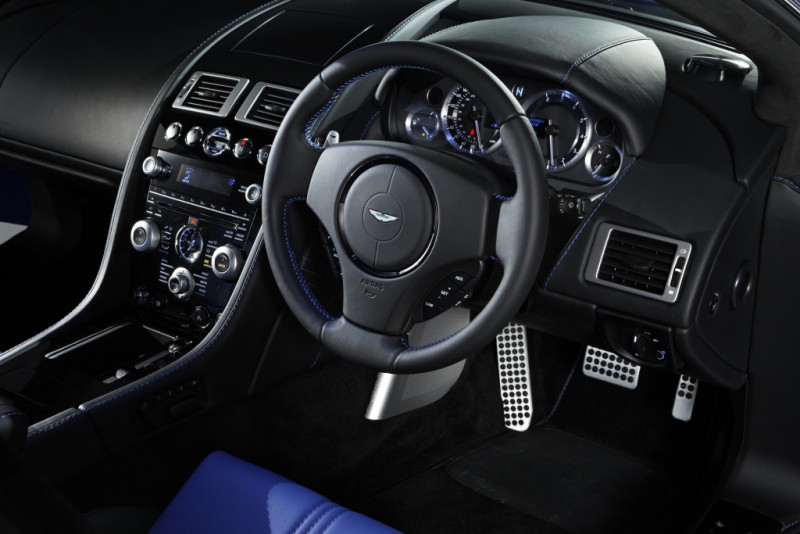
“Early 2006 cars have quite a sport seat with reasonably tight seat bolsters,” says Guy Jenner at HWM. “For the 2007 model year, the seats became more accommodating to suit a wider range of body shapes. Carbon lightweight seats were an expensive option. They are far more sporty than the standard seat and don’t suit everyone, but they look great and have a following. Be prepared to pay a premium for this option.”
WHEELS & TYRES
18in-diameter alloy wheels were initially fitted to the V8 Vantage, before 19in 20-spoke wheels were added in 2008. The width of the wheels is wider at the rear (8.5 inches at the front and 9.5 or 10 inches at the rear), which not only means that the road wheels cannot be swapped from front to rear, but also the tyres, which are wider – 235mm for the front and 275mm for the rear.
Bridgestone Potenza tyres were fitted as standard, which should last for around 20,000 miles, but more importantly, should be changed every six or eight years. A four-digit date stamp on the sidewall of the tyre will indicate when the tyre was manufactured – 4812, for example, denotes the tyre was manufactured in the 48th week of 2012. Expect to pay around £200-250 per tyre.
Common problems include swollen wheel nuts, which at worst can mean a socket cannot be used to undo them. In such cases, a socket for undoing rounded-off fastenings may save the day, but if you want to check for such problems, try fitting the correct size of socket over all of the wheel nuts.
If a vehicle has a tyre pressure monitoring system (TPMS), the batteries that power each sensor and transmitter are mounted inside each wheel and will eventually go flat. Budget for around £150 to replace the batteries in one wheel, which involves removing the tyre.
RUNNING COSTS
For a supercar that’s now the price of a brand-new Ford Kuga, it’s not that expensive to run. Annual car tax should be around £695 and with fuel consumption in the low twenties, expect the 80-litre petrol tank to last for around 350 miles between fill-ups (and cost over £100 to brim it from empty).
Servicing costs can be quite reasonable, and the recommended service interval is every 12 months or 10,000 miles. Chiltern Aston charge between £638.39 and £791.15 for a service on a V8 Vantage, which includes a brake fluid change every 24 months or 20,000 miles and a coolant change every 60 months or 50,000 miles. Extras include a cabin filter every 20,000 miles, an air filter at 30,000 miles, spark plugs every 84 months or 70,000 miles and a gearbox oil change every 40,000 miles.
EXTERIOR
There are several potentially expensive components on the exterior of the V8 Vantage. With halogen projector headlights and LED taillights, ensure all are working properly.
Check the headlight lenses to see if they have turned opaque through overexposure to sunlight (ultraviolet). Chiltern Aston says that they can often restore them and they also apply a UV protection, but if they are beyond repair, a new pair costs around £3,000 fitted. If several of the LEDs inside a rear light unit have failed, it may be possible to have them replaced by an auto electrician, or it may be easier to buy a replacement rear light unit, but they are expensive at around £1,000 each.
Aston Martin Bits says that they sell lots of indicator side repeaters for around £24 each, but are unsure what happens to the old ones and why there is a huge demand for them!
Check the headlight washers work when operating the windscreen washers. A new assembly costs around £250, although an electric pump is cheaper at £75. Aston Martin Bits says that the headlight washer jet covers can fall off, so check they are present. A new one costs around £40.
Whilst inspecting the front of the vehicle, look at the condition of the plastic front splitter mounted to the underside of the front bumper, which can get damaged if it hits a speed bump. A new one costs around £200.
Other exterior parts that can easily get damaged and potentially fall off include the front mud flaps (also called stoneguards), which cost £107 for a pair from Aston Martin Bits. Make sure the fuel filler cap can be released from the cabin. It’s cable operated via an actuator and whilst a snapped cable can be replaced for £20-£40 and a new actuator costs around £90, they are awkward and timeconsuming to fit. “Fuel filler caps are prone to sticking but Aston Martin have taken the precaution of fitting an emergency release in the boot that is easy to access,” says Guy Jenner at HWM. If you are looking at a convertible, inspect the condition of the hood, which should be made from mohair. It’s electronically and hydraulically operated, so test it to ensure it works smoothly. Avoid pausing its operation midway as this can create problems.
VERDICT
The V8 Vantage is currently a moderately young supercar that’s available to buy for almost the same price as a brandnew family runabout, but don’t expect its repairs and running costs to be equally cheap. Look for examples that have been pampered and meticulously maintained, and after buying, ensure you have a reserve of cash to spend on any unexpected repairs. In return, you can have a taste of Aston Martin’s Porsche 911 rival but with the added bonus of greater exclusivity and British performance engineering.
Thanks to: Aston Martin Bits parts@astonmartinbits.com www.astonmartinbits.com Chiltern Aston 01442 833177 www.chilternaston.co.uk HWM Aston Martin 01932 240611

